How to Use A/B Testing Tools for Dropshipping Success

Dropshipping has emerged as a popular business model due to its low startup costs and scalability. However, to truly succeed in dropshipping, businesses must optimize every aspect of their online store. This is where A/B testing tools come into play. These tools allow companies to test different versions of their website elements to see which ones perform better, thereby making data-driven decisions that enhance user experience and increase conversion rates.
What Is A/B Testing & How It Works
A/B testing, or split testing, is a method for comparing two versions of a webpage or digital element to determine which performs better in achieving specific goals. The process involves dividing the audience into two groups: one group is exposed to the original version (Version A), while the other group sees the modified version (Version B). By examining how each group interacts with the versions, businesses can identify which version yields better results, such as higher conversion rates or increased user engagement.
To conduct an A/B test, the first step is to select the element to test, such as headlines, images, or CTA buttons. Variations of this element are created, with one being the original and the other the modified version. Goals and metrics are defined to measure success, and traffic is then split between the versions. Data on user interactions is collected and analyzed to determine which version performs better. The more effective version is then implemented, and ongoing testing is recommended for continued optimization.
Popular A/B Testing Tools
Several A/B testing tools are available, each offering distinct features to help businesses optimize their digital presence. Some popular options include:
Optimizely
Optimizely is a powerful A/B testing and experimentation platform known for its advanced capabilities and user-friendly interface. It offers features like multivariate testing, personalization, and robust analytics. Optimizely is suitable for businesses of all sizes, particularly those needing comprehensive testing solutions. The platform also supports server-side testing, allowing for deeper experimentation beyond the user interface.
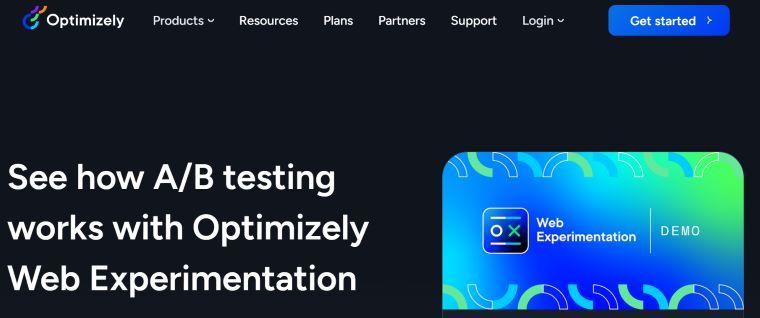
VWO (Visual Website Optimizer)
VWO is a comprehensive A/B testing and conversion optimization platform. It includes features like heat maps, session recordings, and user segmentation. VWO allows businesses to conduct detailed testing and gain insights into user behavior. The platform's visual editor makes it easy to create test variations without requiring coding skills, and its detailed reporting helps identify the most effective changes.
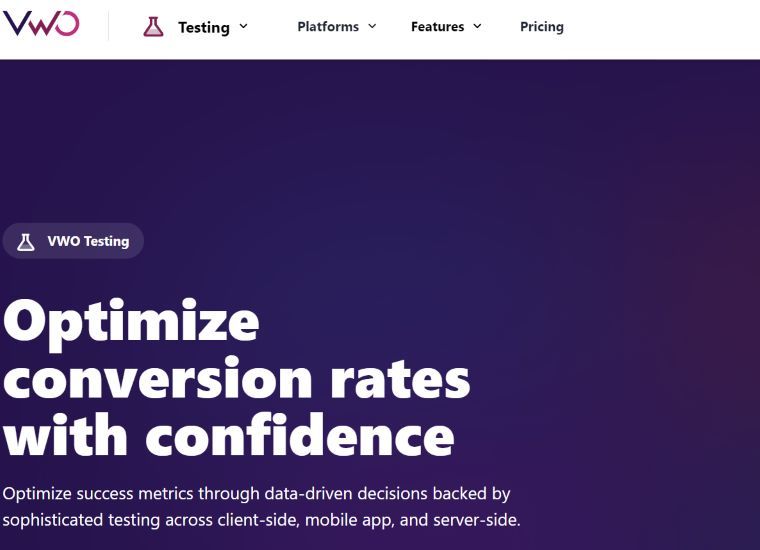
Convert
Convert is an A/B testing tool focused on providing detailed insights and precise targeting. It supports advanced segmentation, real-time reporting, and multivariate testing. Convert is suitable for businesses that require in-depth analysis and accurate targeting capabilities. The platform's flexibility and powerful features make it a popular choice for experienced marketers and businesses with complex testing needs.
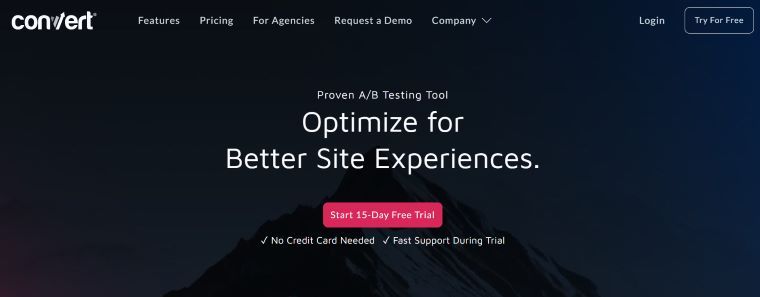
AB Tasty
AB Tasty is a user-friendly A/B testing and personalization platform designed for marketing teams. It offers features like visual editing, detailed analytics, and extensive integration options. AB Tasty's interface is intuitive, making it accessible for users with varying levels of technical expertise. The platform supports a wide range of tests, from simple A/B tests to complex multivariate experiments, helping businesses optimize their digital experiences.
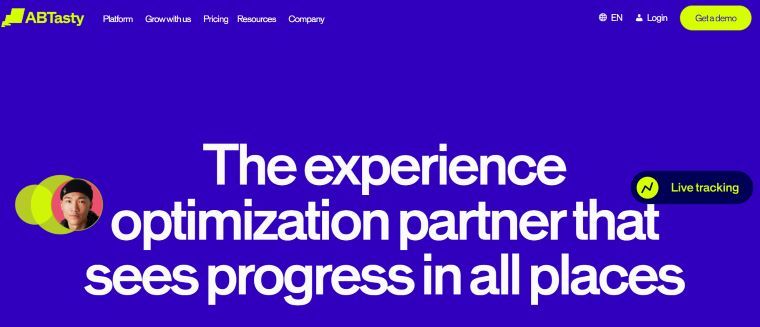
Benefits of Using A/B Testing Tools
Using A/B testing tools offers several benefits that can significantly enhance a business's performance and user engagement.
Enhanced Conversion Rates
A/B testing tools enable businesses to identify and implement the most effective elements on their web pages or digital platforms. By comparing different versions of an element, such as headlines, images, or CTA buttons, businesses can determine which variation leads to higher conversion rates. Implementing the most effective version can result in increased sales, sign-ups, or other desired actions, directly boosting overall conversion rates.
Improved User Experience
By systematically testing and refining different aspects of a website or application, A/B testing tools help optimize user experience. Businesses can discover which design elements, content formats, or navigation structures are more appealing and intuitive for users. Enhancing user experience can lead to higher engagement, longer time spent on the site, and improved customer satisfaction, contributing to a more positive overall impression of the brand.
Efficient Testing Processes
A/B testing tools streamline the process of experimentation and optimization. These tools provide structured frameworks for setting up tests, distributing traffic, collecting data, and analyzing results. They often include features like visual editors and automated reporting, which simplify the testing process and make it more efficient. This allows businesses to quickly implement changes and continuously refine their digital strategies based on data-driven insights.
Data-Driven Decision Making
A/B testing tools provide valuable insights through data collection and analysis. By relying on actual user interactions rather than assumptions or guesswork, businesses can make informed decisions about which changes will have the most impact. This leads to more effective optimization strategies and better alignment with user preferences and behaviors.
Reduced Risk
Testing changes on a smaller scale before a full rollout helps minimize the risk of negative impacts on overall performance. A/B testing tools allow businesses to evaluate the potential effects of modifications in a controlled environment, ensuring that only the most effective changes are implemented site-wide.
Efficient Optimization
These tools streamline the process of setting up, running, and analyzing tests. Features like visual editors and automated reporting make it easier to create and manage experiments, analyze results, and implement improvements quickly. This efficiency accelerates the optimization process and allows for continuous refinement of digital strategies.
How to Apply A/B Testing Tools in Dropshipping
Applying A/B testing tools in dropshipping involves optimizing various aspects of an e-commerce store to enhance performance and drive better results. Here’s how these tools can be effectively used in key areas:
Product Pages
Images and Descriptions: Test different product images to see which ones generate higher engagement and conversions. Variations might include different angles, sizes, or lifestyle shots. Similarly, experiment with various product descriptions, such as detailed versus concise, or different tones and formats.
Call-to-Action (CTA) Buttons: Experiment with different CTA button designs, including their color, size, placement, and text. Testing variations like "Buy Now" versus "Add to Cart" can reveal which prompts more clicks and purchases.
Layout and Design: Compare different layouts for product pages, including the arrangement of images, descriptions, and customer reviews. Testing changes in design can help determine which layout enhances user experience and leads to higher conversion rates.
Pricing Strategies
Test various pricing strategies to find the optimal price that maximizes sales and profit. This can include testing different price points or psychological pricing strategies, such as $19.99 versus $20.00.
Experiment with different types of promotions, such as percentage discounts, buy-one-get-one-free offers, or free shipping. Determine which type of promotion is most effective in driving sales without significantly impacting profit margins.
Test different product bundling options, offering combinations of products at a discounted rate compared to buying them individually. Analyze which bundle combinations and pricing structures attract more customers and increase average order value.

|
Adapt Your Product Prices Automatically DSers Automatic Pricing - Pre-set Pricing Rule to mark-up your product price automatically |
Marketing Campaigns
Test different elements of email campaigns, including subject lines, email content, and CTAs. Variations in subject lines, promotional offers, and email formats can be compared to determine which leads to higher open rates, click-through rates, and conversions.
For paid advertising campaigns, test different ad copies, headlines, and visuals. This includes experimenting with different messaging and imagery to identify which ad variations generate more clicks and conversions.
Create and test different versions of landing pages used in marketing campaigns. Variations might include different headlines, images, CTAs, and overall layout. Analyze which landing page design performs best in converting visitors into customers.
Checkout Process
Test different checkout flows, such as single-page versus multi-page checkouts. Assess which flow results in fewer cart abandonments and higher completion rates.
Experiment with the number and type of form fields required during checkout. Testing variations in form length and required fields can help streamline the process and improve completion rates.
Test the placement and prominence of trust signals like security badges, customer testimonials, and money-back guarantees during checkout. Evaluate which trust signals reduce buyer anxiety and increase the likelihood of completing a purchase.
Conclusion
A/B testing tools play a crucial role in optimizing a dropshipping business. By systematically testing and refining various elements such as product pages, pricing strategies, marketing campaigns, and the checkout process, businesses can make data-driven decisions that enhance performance and drive success. Embracing A/B testing ensures continuous improvement and helps businesses stay competitive in the dynamic e-commerce landscape.
For more information about dropshipping, explore DSers.




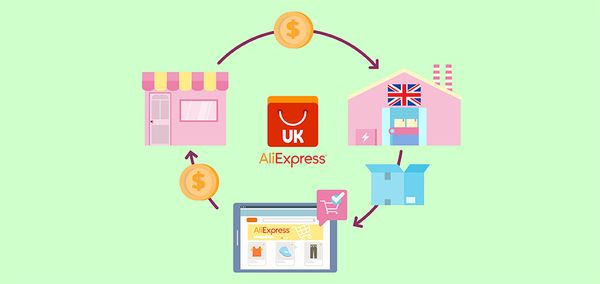






 Company
Company
 Why Choose DSers
Why Choose DSers
 Blog
Blog
 Help Center
Help Center




 Live Chat
Live Chat